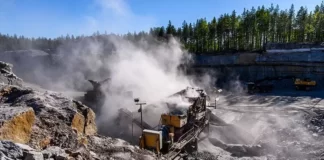The latest edition of KPMG International’s 2023 Global Mining and Metals Outlook: Executive insights on decarbonization highlights the confidence of sector executives in their ability to deliver on both growth and decarbonization objectives. The report looks at areas of opportunity, with technology and innovation key among those called out. A main finding is the ability of the industry to maintain a strong growth outlook while integrating ESG objectives and achieving net-zero targets.
“The global metals sector is striving to meet its decarbonization commitments while investing heavily in technologies that will shift companies onto a new environmental trajectory, it’s going to be challenging, but executives are up to the task,” says Ugo Platania, Global Head of Metals, KPMG International. “Our report shows metals and mining company executives aim to reconcile ambitious growth targets with stringent carbon-reduction objectives, by designing their operating model to accommodate both objectives. Achieving net-zero carbon emissions by 2040 or 2050 may seem a long way off, but now is the time to integrate those ambitions into enterprise strategy.”
“The global mining industry knows there is a great deal of heavy lifting ahead to achieve net zero targets – and that time is of the essence,” says Trevor Hart, Global Head of Mining, KPMG International. “Our report shows metals and mining company executives understand that to succeed in reconciling ambitious growth targets with stringent carbon-reduction objectives, they will have to design their operating model to accommodate both objectives. Achieving net-zero carbon emissions by 2040 or 2050 may seem a long way off, but now is the time to integrate those ambitions into enterprise strategy.”

Among the key findings:
• The metals and mining industry as a whole is confident it can reconcile rapid output growth with sustainability goals. The ratio of optimists to pessimists is four to one. But there is a noticeable difference among producers of materials critical to a net-zero future. These include suppliers of aluminum, cobalt, copper, graphite, lithium, manganese, and nickel. A majority of them are also confident of growing fast in a ‘green’ way, but the ratio is much narrower: 64 percent to 37 percent.
• It is crucial for firms in the industry to integrate ESG and net-zero objectives into long-term strategy, but 34 percent say their company has only just begun to do so. Only 28 percent have already performed the work of integration.
• An overwhelming majority of executives are confident in the growth prospects for their company and the industry as a whole, according to the survey. One reason why executives are confident about the future is that they regard decarbonization plans as a source of profit and not merely a cost of doing business.
• The rapid progress mining companies are already making to reduce carbon emissions is encouraging them to invest more in efforts to decarbonize. The survey shows that improving energy consumption efficiency is the highest priority for tackling the environmental effects of mining and metal processing.
• Executives in the survey consider that the highest priority for tackling the social impact of mining and metals processing is to provide workers with healthcare, paid leave, and pensions. Offering non-salary benefits is seen as an important way of attracting and retaining workers.
The survey shows that among the most effective measures to help companies meet their ESG objectives is to ensure that the CEO and the board of directors are committed to these goals. Amit Bhargava, Partner and Lead – Mining and Metals, KPMG in India says, “Corporate leaders have the mandate and responsibility to align their ESG strategy with key stakeholders, including Governments, customers technology providers and suppliers in their ecosystem. This is critical and requires a very clear roadmap. They also need to structure incentives and performance management to have their organisations aligned with ESG outcomes.”
This year educate yourself and develop your career with EasyShiksha





































































